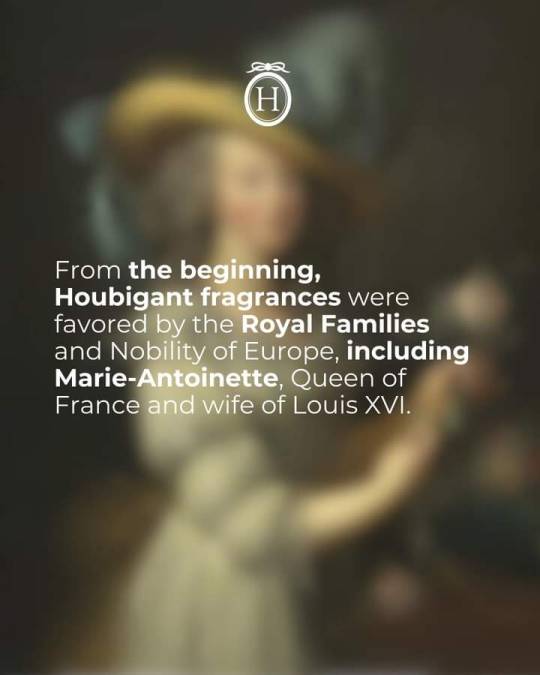#Houbigant
Explore tagged Tumblr posts
Text


look for the name INGA (requested by anonymous) | la perla brown sheer lace bodysuit (c. 199o's), simone rocha long embellished bow in pink, christian dior beaded pearl choker, enfants riches déprimés stockings and heels (a/w 2o24), carolein smit pearl-wrapped rat art piece (2o17), houbigant "le parfum ideal" eau de parfum (c. 192o's), french carved celluloid swan brooch (c. 192o's), pearlandi (on etsy) handmade turkish crucifix indiviulal gold charm earring, nell brinkley drawing of a girl on the phone with a cherub switchboard operator, antique victorian mesh slide garter w/ dangle tassels, oversized brown czech glass cocktail ring, antique french-style chased repoussé gilt telephone w/ carved jade inset
#name#inga#request#outfit#brown#beige#pink#gold#yellow#la perla#simone rocha#192o's#enfants riches déprimés#antique#houbigant#perfume#footwear#pearlandi#etsy#nell brinkley#art#jewellry#ring#telephone#decor#carolein smit#statue#rat#queue
548 notes
·
View notes
Text
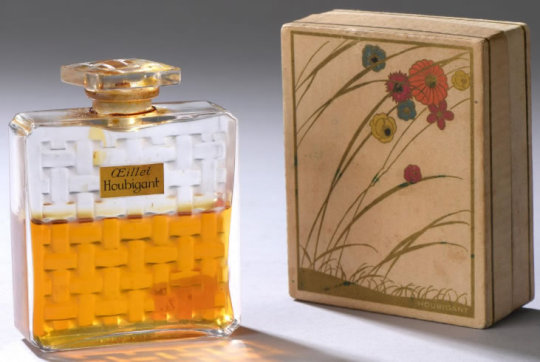
Rene Lalique Perfume Bottle for 'Oeillet Houbigant'
4 notes
·
View notes
Text



Série de "Boîtes à Poudre" (1881-2021) à l'exposition “L'Intime, de la Chambre aux Réseaux Sociaux” au Musée des Arts Décoratifs (MAD), novembre 2024.“
#expos#beauté#parfums#Bourjois#Caron#LeClerc#Guerlain#Rubinstein#Piver#Houbigant#Fenty#Coty#Lalique#Boucheron#Hermes#Chanel#MAC#Vautrin#MuseeArtsDecoratifs
2 notes
·
View notes
Text
Cecilia Mergui, Bienaime, Live Interview
Founded in 1935, the brand Bienaime enjoyed considerable success until it fell on hard times a few decades later. It has now been revived by Cecilia Mergui, who tells the incredible story of her encounter with the house in my latest YouTube interview.
A few years ago, when Cecilia Mergui found an old powder box at a yard sale in France, she had no idea that the discovery would lead her to revive Bienaime: the brand founded in 1935 by one Robert Bienaime, who happened to be the creator of the original Houbigant Quelques Fleurs. Mergui popped into my virtual studio the other day to talk about the re-birth of the house, why she decided against…
#1935#2024#Bienaime#Cecilia Mergui#Fleurs D&039;Ete#history#Houbigant#interview#Jours Heureux#Le Vien En Fleurs#live interview#Love At First Scent#Maelstrom#Marie Schnirer#Monsieur#Patrice Revillard#perfume industry#Quelques Fleurs#Robert Bienaime#Vermeil
0 notes
Text

Representation of King Saint Louis. By Armand Gustave Houbigant.
#Armand Gustave Houbigant#royaume de france#kingdom of france#capétiens#capetian#st louis#louis ix#roi de france#vive le roi#crusader#crusades#outremer#saints#catholicism#christianity#capetians#royalty
3 notes
·
View notes
Text
Writing Notes: Fragrance Classification

Citrus
lemon, sweet orange, mandarin, grapefruit, lime, lemongrass, bergamot, citral, dihyromyrcenol
Floral
rose, jasmine, ylang ylang, muguet (lily of the valley), tuberose, orange blossom, violet, gardenia; types of floral scents: aldehydic, fruity, white, transparent ozonic, spicy
Oriental
vanilla, benzoin, labdanum, coumarin, civet, tolu balsam, oakmoss, musks, spices, woods; types of oriental scents: gourmand, woody, floral
Chypre
bergamot, oakmoss, labdanum, patchouli, vetiver, benzoin, castoreum
[The chypre family is derived from materials traditionally found on the island of Cyprus (Chypre, in French), which was a hub of the aromatics trade for many centuries. In 1917, Francois Coty, who was originally from Corsica, created a fragrance called Le Chypre based on bergamot, oakmoss, labdanum, jasmine, and animalic musks. Although no longer produced today, there are echoes of Le Chypre in all fragrances in this category.]
Fougére
coumarin, lavender, oakmoss, citrus
[This category is named after a specific perfume: Fougére-Royale (meaning royal fern). Created in 1882 by Paul Parquet, chief perfumer at Houbigant, Fougére Royale was originally sold as a toilet soap. It was a “fantasy” accord in that it was made to imitate the aroma of an odor-less fern. These days we’re used to fragrances evoking imaginary flowers or other abstract themes, but at the time this “fantasy” perfume was seen as ground-breaking.]
NOTE
Classifying fragrances into families makes it easier to understand their composition and also helps the fragrance buyer work out what they prefer.
It is quite likely that if you are fond of a particular fragrance, then you will also like others in the same category. Fragrances fit within particular families due to their unique combinations of ingredients.
It may be fairly straightforward to work out if a fragrance is a citrus or a single floral note, but some are a little more tricky without some technical knowledge.
Other than smelling, knowing the vocabulary used in perfumery deepens your understanding and will help you to recognize different scents more easily.
Source: Perfume: The Art and Craft of Fragrance by Karen Gilbert
#perfume#writing reference#writeblr#dark academia#spilled ink#writers on tumblr#writing prompt#poets on tumblr#literature#creative writing#writing inspiration#writing ideas#light academia#fragrance#nature#konstantin somov#writing resources
279 notes
·
View notes
Text
Chopin’s Wardrobe — What I Wore
Today I would like to share with you all the manner in which I dressed. It is interesting to see how fashions have changed over the course of 200 years. Some might say style has slipped… Anyway! Here are some details on my wardrobe:
My Suit
I liked to wear sober colours: black, mauve, blue… and especially grey. For instance, I once asked Julian Fontana to have made for me a pair of dark grey winter trousers, without a belt, which were smooth and stretchy.

Grey trousers, 1840.
At a concert in Glasgow, a pupil recalled that I had worn a pale grey suit. Which included a frock-coat of identical tint and texture.


(Left) Frock coat, 1840. (Right) Frock coat and trousers, 1852.
Under my suit, I would wear a modest waistcoat in a fabric such as a black velvet with a tiny inconspicuous pattern, something very quiet and elegant.



(Left) Provençal waistcoat with mauve silk seedlings, 1860. (Centre) Waistcoat with floral pattern, 1838. (Right) Striped waistcoat, 1850-70.
My preferred shirts were ones made of cambric or batiste fabric. They had small mother-of-pearl buttons, two breast-pockets, and could be bought for 14 francs.

For my cravat, I would wear muted colours during the day. Usually, I would tie it in a bow. However, when performing in a formal setting, I would wear a broad, white silk cravat.


Winter Clothes
To keep warm in the winter months, I wore a thick redingote or over-frock coat, as can be seen in this daguerreotype of myself from 1849.




(Left) Wool coat, 1840. (Centre) Winter costume. Paul Gavarni, 1846. (Right) Frock coat. Wool, trimmed with silk velvet. 1820-1830.
At one point, my sickness rendered me so sensitive to the cold that I wore three flannels under my trousers.

Underpants, mid-nineteenth century.
Accessories
Because I had small feet, I often found shoes uncomfortable. I mourned the day, Moos, my shoemaker died. No one made my shoes like him.

1840s men’s shoes.
On my head, I would always have my hair curled, and, when outdoors, I would wear a top hat. I bought my hats from Dupont’s because he made them lightweight. They were originally made of beaver felt but, by my later life, they were made of silk plush.


(Left) Top hat made of beaver felt, 1830s. (Right) Top hat made of silk plush, 1850.
My outfit was only complete with white gloves. Without them one would not be in good taste. Kid gloves were common, but I also liked wearing Swedish (suede) gloves. Always in white.

Evening gloves. 1848.
A pocket handkerchief was also a necessity.

Finally, I had a miniature pocket watch. According to one concert-goer, it was “In shape no bigger than an agate stone, on the forefinger of an alderman.”

Where did I shop?
I bought my top hats from Dupont’s at No 8, rue de Montblanc (the previous name for rue de la Chaussée-d’Antin). I lived on this street myself, both at No 5 (1833-36) and No 38 (1836-38).


(Left) 9, rue de la Chaussée-d’Antin, the fabric shop across the street from the milliners, 1840s. (Right) Rue de la Chaussée-d’Antin, 1858-1878.
My shirts came from No 37 in the Palais Royal galleries, on the theatre side.


(Left) View of the Galerie d'Orléans in the Palais-Royal, 1838. (Right) Jardin du Palais Royal, 1840s.
The white suede gloves could be acquired from À la Corbeille de Fleurs, Houbigant’s shop at No 19, rue du Faubourg Saint-Honoré.


(Left) The corner of rue du Faubourg-Saint-Honoré, 1820-1840. (Right) Faubourg Saint-Honoré, 1814-1885.
There were also many shops along the Grands Boulevards. This is where I got my trousers made by my tailor, Dautremont.


(Left) Boulevard de la Madeleine, 1799. (Right) Boulevard des Capucines, 1830.


Boulevard des Italiens, 1840s (left), 1835 (right).
So…
As you can see, in spite my reputation for being picky and perhaps… prissy, with regard to fashion and furniture, I was far from what was called a dandy. My dress was never over-the-top and nor did I put on the airs that were so pertinent to dandyism. My desire, if anything, was to be refined and respectable. Although, perhaps my efforts to do so were occasionally cause for frenzy or distraction.
#1830s#1840s#historical men's fashion#romantic era#frycek’s fashion tips#biography#frédéric chopin#fashion history
137 notes
·
View notes
Text
Featured plate: 1897-03 JDD5133
Fashion plate from the Journal des Demoiselles (Paris) for March of 1897, signed P. Deferneville and B.C.

Toilettes de Mme Thirion, 47 Bd St Michel. Etoffes de la Mon Roullier Fres., 27 rue du 4 Septembre. Corsets de Mme Emma Guelle, 3 place du Théàtre Français. Chapeau Hélèna, 12 rue Auber. Parfumerie Houbigant, 19 rue du Faubourg Saint Honoré.
1897-03 JDD5133
#fashion plate#historical fashion#french fashion plate#victorian fashion plate#Journal des Demoiselles#Journal des Demoiselles (Paris)#1890s#1890s fashion#1890s fashion plate
20 notes
·
View notes
Text
A letter from Junot to his private secretary, during the Russian campaign
This is the one letter from the little series of intercepted letters during the Russian campaign, involving Laure, Calo Lallemand and Junot, that I had not translated yet. It's from the same batch, and dated from Mojaisk, where Junot at the time stayed as gouvernor.
For context: This is over a month after the Battle of Borodino, and almost two months after the Battle of Smolensk that had caused Junot's disgrace. Napoleon and the greater part of the army are still in burnt-down Moscow.
Letter 64. Junot, Duc d’Abrantès, to Cissout Fissont (*), his private secretary, in his palace in Paris
Mojaisk, 13 October [1812]
I received your letter of 19 September, my dear Cissout Fissont, with the August post; it is a bit thick, but what can I do? I don't understand how you have gone so long without a letter from me; a courier must have been taken. I sent you a life certificate from Gjatsk. I'm sending you another one, take your pick.
This morning I received nine parcels by Westphalian post! The gloves are worthless and look like they were made for a comedian at the Variétés. I need strong green gloves and they cost 30 francs instead of 26. You sent me some old silk stockings. I need strong new boot stockings; add some extremely fine woollen stockings. The boots, instead of being widened by two lines at the calf, have been widened by two hands, so that they might fit my thighs. Pay your compliments to Asselay, I haven't tried them yet, so don't pay for them before I tell you to. Monsieur Oubiguand does not make cologne, it is Monsieur Farina who does, and Monsieur Oubiguand has no other privilege than to make it badly. Find out all about it. Economy does not consist in buying what is the cheapest, it consists in choosing what is the best and at the right price.
Prévot is still in Moscow, and I expect him any day now; the Cossacks don't let everyone through.
You will give the small letter to the Duchess as soon as it reaches you; if the large letter reaches you in the evening, you will not give it until the following day, saying that it is another courier; similarly, if it arrives in the morning, you will give it four hours after the small letter, and you will say that there were two packages for you in the courier and that you had only been given one (office error). You will give the letter to Madame Lallemand at the same time as the small one to the Duchess, but without her seeing you, you will call her, if she is with the Duchess, on whatever pretext.
Courage, economy, finesse, and all will be well. Adieu, I am well. All yours,
Le Duc.
(Source: Lettres interceptées durant la campagne de 1812, Paris 1913, edited by Goriainow, Hennet, Martin)
On a sidenote: The Monsieur with the weird name Oubiguand seems to refer to the famous perfumer Houbigant
---
(*) I had already suspected this but had not dared to question the authority of editor Frédéric Masson, but Robert Chantemesse thinks the same: "Cissout" is misread for "Fissont", Junot's well-known secretary who will also make an appearance in Eugène's correspondence.
20 notes
·
View notes
Text
Olga Paley's life of luxury in Paris

Olga’s diaries, which survive in the state archives in Moscow, are an endless catalog of self-indulgence, of her expenditure on dress fittings and hairdos several times a week, on perfume from Roger & Gallet and Houbigant, on beauty products from Guerlain. She had already become acquainted with the best shops on the rue de la Paix before she met Paul—from accompanying her first husband, Erich von Pistohlkors, on trips abroad. She was a regular patron of Paquin, whose gowns cost 5,000–6,000 francs each, and had become a devoted customer of Charles Worth—a few doors down from Cartier.
Olga dreaded getting fat and not being able to squeeze into her gorgeous, expensive gowns, so avoided eating at table, instead having snacks in private between meals. It was worth it for the moment of triumph she enjoyed at Madame Yturbe’s Hungarian costume ball in 1912, where she arrived dripping in luxury: a dress by Worth encrusted with rows of pearls and a Cartier tiara of pear-shaped diamonds on the bodice, an imposing hussar-style fur hat bearing a Cartier diamond and pearl corsage, and a matching fur cape. Olga’s coiffure for the occasion cost 9,950 francs (around $700) at the hairdresser Savary. A photograph of her in full rig by fashionable photographer Boissonas & Taponier and widely circulated in the press marked the high point of Belle Époque fashion.

On a typical day in May 1904, Olga had noted in her diary a trip to jeweler André Falize to inspect Princess Mathilde’s jewels* and “then to Cartier to look at different objects and buy some.” After lunch she ordered a hat at Meyer’s establishment, and then went to the Austrian patissier Anton Rumpelmayer on rue de Rivoli for tea and gateau, then once more back to Cartier. Such shopping expeditions, she wrote in her diary, were all “terribly exhausting,” as were the never-ending stack of invitations that demanded her and Paul’s attendance at charity fetes, baptisms, marriages, garden parties, balls, and trips to the opera and theater. When it all got too much, they would head off with their children to Biarritz, the South of France, or Italy, or go to Germany to “take the cure.”
"After the Romanovs" - Helen Rappaport
#romanov#paul alexandrovich#olga paley#imperial russia#imperial family#royalty#grand duke#belle époque#paris france#cartier#worth#paquin#fashion history#early 20th century
12 notes
·
View notes
Text

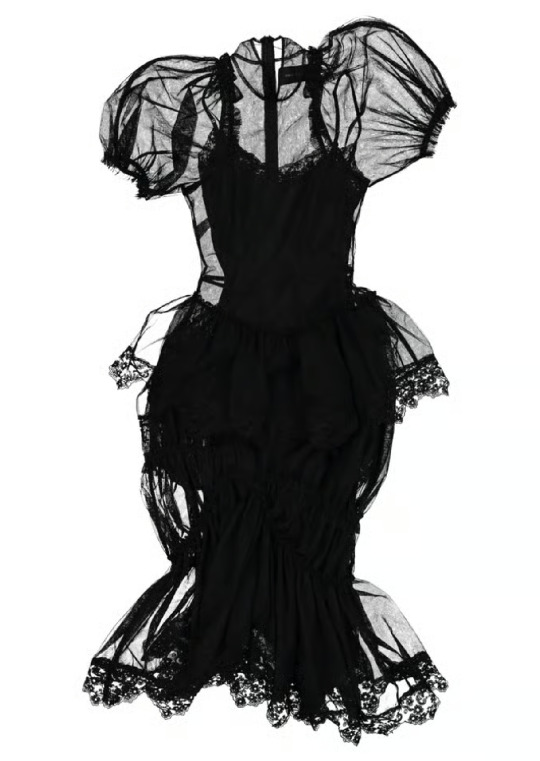
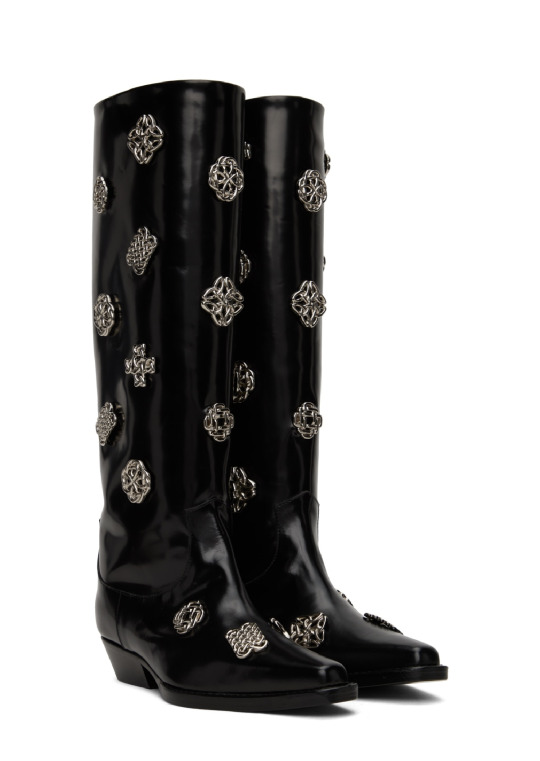
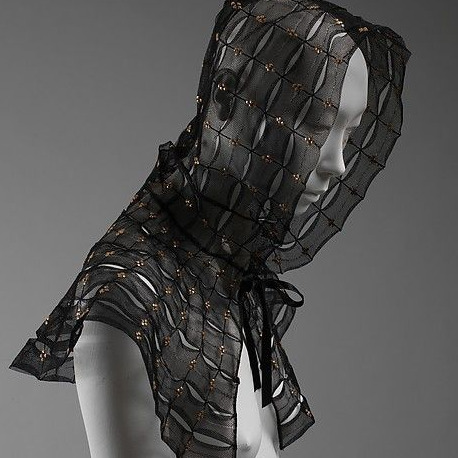
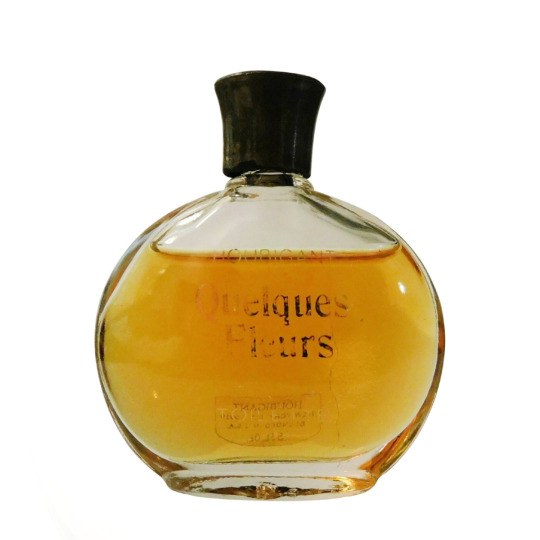

look for the name: DIANA
simone rocha black mesh and lace dress w/ short puff sleeves
toga pulla knee-high buffed leather boots in black w/ signature hardware throughout
house of lanvin black cotton evening cape, c. late 193o's
houbigant "quelques fleurs l'original" eau de parfum
vivienne westwood black "doll" croc-embossed leather coin pouch in black
#diana#name#request#outfit#hope you like !#vintage#madame#black#simone rocha#dress#toga pulla#boots#footwear#house of lanvin#lanvin#cape#hood#houbigant#edp#perfume#vivienne westwood#bag#coin pouch#queue
121 notes
·
View notes
Text
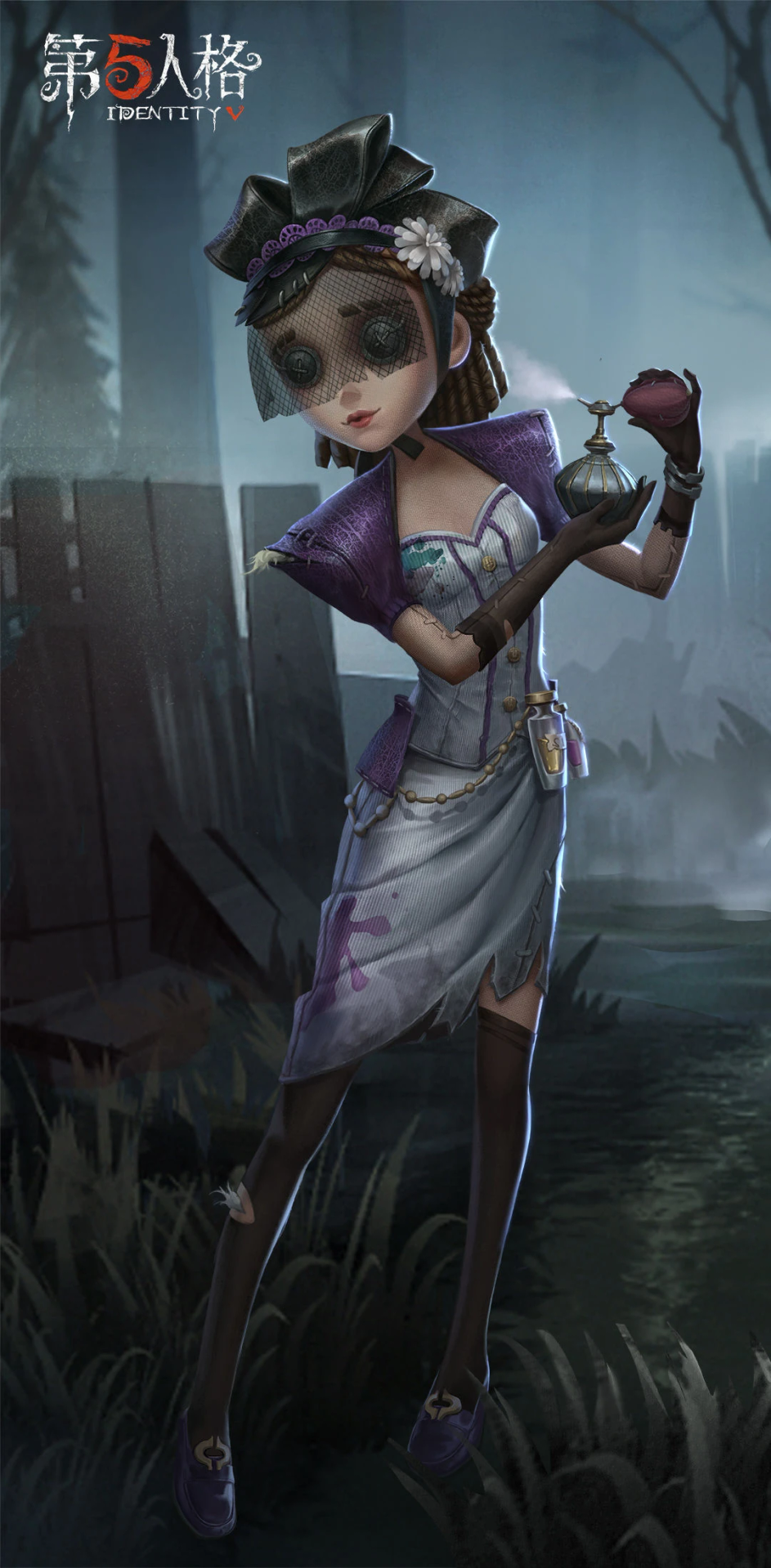
Vera Analysis
Vera was born in Grasse, France. This was a town where originally tanning flourished in the 16th century, but it dies out eventually. This was in part due to competition with Nice, France, but also because they switched to focusing on perfume later.
Perfume or “perfumus” in Latin means “through smoke”.
Tanning left a strong stench, and due to complaints, it became fashionable to have scented gloves. Grasse produced the aroma oils that were put into the leather gloves, and slowly their reputation as a perfume hub increased.
Eventually there was a surge in demand for high quality fragrances, leading to perfume workshops being built and artisans known as “noses” or perfumers being employed who could blend and refine scents. These were people with a natural aptitude for scent, highly trained, finely tuned olfactory abilities as well knowledge of fragrance materials.
It took time for the perfume industry to rebound after the French Reign of Terror, which an emphasis on personal cleanliness around that time helped with. Napolean himself actually encouraged the cultivation of flowers for fragrances, leading to creation of flower fields around Grasse. Flowers sent to Paris were used to create luxury perfumes for the French elite.
The 1st of 3 large perfumeries in Grasse was Galimard in 1747, with Molinard, the 2nd, founded in 1849 (the 3rd was Fragonard, built in 1926). More factories appeared with time, especially with new processes found to absorb scent molecules. In 1850, there were about 45, but by 1875 there were 65. There were also 3 types of factories: plant growers, flower brokers, and manufacturers.
Victorian ladies weren’t known for wearing excessive fragrances. At least initially, the belief was that perfumes should be so “delicate” and so “lingeringly fragrant” that no one could define it as more than the “ghost of a sweet scent”. Anything too strong or overly-lavish was associated with people like prostitutes. Back then, perfumes were generally simpler, consisting mostly of florals and botanicals. They also didn’t apply perfume to the skin, instead using it on gloves, handkerchiefs, clothing, and cosmetics. A predominant scent back then was Eau de Cologne, which was a sharp clean scent that cut through other smells, though it was later surpassed by Bergamont and lemon oil.
Queen Victoria’s scent was the orange blossom. She also loved violets, which were popular in Victorian toiletries.
The focus on singular scent fragrances (smell of a single flower) changed by the end of the 19th century. There were several reasons for this. Raw materials started to be imported from abroad, helping reduce prices, as well as caused Grasse to focus on perfume production rather than flower fields and growing. Another reason was the improvement to the techniques they used. The discovery of solvent extraction techniques allowed for the extraction of fragrant oils without damaging the essence of delicate flowers and enabled the creation of more intricate and nuanced fragrances. The 19th century was when synthetics were 1st made and used. Houbigant and Guerlain were the first to use synthetic products: Fougère royale in 1884, Jicky in 1889, which are considered the 1st modern perfume. Finally, due to synthetic perfumes becoming cheaper to make, wealthy ladies wanted more complex, unique, and as yet unsynthesized perfumes to distance themselves from the lower class.
Going back to Vera, the “Vera” we know in game, the perfumer, is actually Chloe Nair. The real Vera Nair was Chloe’s twin sister.
Chloe herself was initially a timid girl, the type who was easily frightened and lacking in self-confidence, but the 1 person she felt happy with was her twin, Vera, the only person who truly understood Chloe. Unlike Chloe, Vera was cheerful and confident. Despite their differences, they were extremely close and did almost everything together.

But she was the only one.
Adults in their hometown of Grasse, France unfortunately often compared the 2, in a judgmental, self-righteous way. So, it was no surprised they essentially labeled Chloe, who started working and experimenting with perfumes from a young age, as the negative, weird one who “only seemed to know fragrance” and how to make perfumes, while Vera was the “elegant and flattering beauty” popular with the townspeople. As a result of Chloe’s nervous and unlikeable character, they alienated the more fragile of the 2 sisters, which led Chloe to becoming increasingly negative, sensitive, and suspicious. Seeing just how popular her twin was in comparison probably reduced her own self-confidence further.

Despite how much this hurt Chloe and worsened the outlook she had on herself and others, and despite how much the residents loved Vera, Vera’s opinion of Chloe differed from everyone else. She knew the truth of just how skilled Chloe was with perfumes, and just how deep her knowledge was of them. Chloe’s skills were supported by her superior sense of smell and sensitivity to scents, which she saw as each “[telling] a story of nature”.

Not even the rest of Chloe’s family supported her though, as Craig Nair, the “Family Store Manager” (potentially her father, but we can’t be completely sure) told her “If you want your work to have a chance to appear in front of others, you need to cease your weird and comical endeavors”.

The title of this deduction is “Attempt”, followed by the line “Creativity is never liked before it has been proven successful”. This is a bit confusing as Grasse then was still a perfumery hub back then, so Vera being involved with perfumes at all shouldn’t be a problem.
Based on what we’ve heard about Grasse’s history and the development of perfumery, my best guess to explain Craig’s words is this was when simple scents, for that emphasis on personal cleanliness, were still the most popular, before the desire for more complex fragrances. As I said, there were negative connotations of any scent that was considered too lavish. If Vera was one of those beginning to experiment with something besides single scent fragrances, that could explain why he’d talk about her weird “endeavors”, as well as explain the title being “attempt” and the line about “creativity”.
Complex fragrances, like the deduction say, weren’t “liked” before they were “proven successful”. Craig doesn’t seem the type to want to take risks. He wants to stick with what has always worked. The townspeople are similar, though they also don’t understand how interested Vera is in perfume, or the “stories” tell from each scent. But it’s also possible Vera, least to the townspeople “only seems to know fragrance”, aka she pretty much focused all her time on perfumes, could’ve been more than just because she was interested in it. It’s also possible she leaned into it because it was the 1 thing she was good at, while everyone (likely including Craig) saw her sister as the better one. That or because everyone, especially Craig, never saw her as good enough, so she tried to stand out in the 1 way she knew how.
I think the idea Vera was experimenting with complex fragrances while most others, like Craig, were still focused on single scents could be backed up by deduction 5, which includes the line “Two roses, five parts sandalwood, one part geranium, one part rosewood”. Similarly, Vera had another quote in 2018 that involved multiple ingredients: “The secret formula of love: three sprigs of tuberose, one sprig of jasmine, one sprig of clove, half a sprig of chrysanthemum and hyacinth”.


Going back to deduction 5, we see that the fragrance she was developing there was for her sister. This helps show how close the 2 were, as well as likely how grateful Chloe was for Vera’s support. Vera was Chloe’s lifeline. The 1 person who was “willing to listen, take her seriously, and support her in endeavors that seem strange to others”. Vera was Chloe’s outlet, a way to help keep her sane despite how bad everything else around her was.
Unfortunately, this didn’t last. When Chloe sees the news about Vera opening a new perfume shop, and the admiration and fame she gets from it, Chloe feels betrayed. We can see her anger and her losing control of her emotions by the way the newspaper is described to have been “shredded and pasted together”, as well as how deduction 6 includes the line “Incredible: These should have belonged to me!”.

Then there’s deduction 7, titled “vengeance”, which also includes the word “resentful”.

In this same deduction, as well as the next, we essentially learn that Chloe killed her sister (with a dagger) then took her identity. By becoming “Vera”, and taking ownership of the perfume shop the real Vera started, Chloe finally gets the attention and admiration she’s wanted for so long, as we see from deduction 8’s line “So that is what it is like to become the focus of the masses”. Her life now feels like it is finally “on track”.

To everyone else, Chloe seems to have just “disappeared”, though Chloe doesn’t think anyone cares. It doesn’t matter. “Vera” is enjoying the fame and status brought by stealing her sister’s identity, as we see from the line “there seems to be a disparaging look in her eyes and she is enjoying it”. Chloe is now “Vera”, and her personality changes to fit her new identity, as well as a result of the reputation and admiration she is now getting, as she is now described in the early version of the artbook as “arrogant, hypercritical, and graceful”.
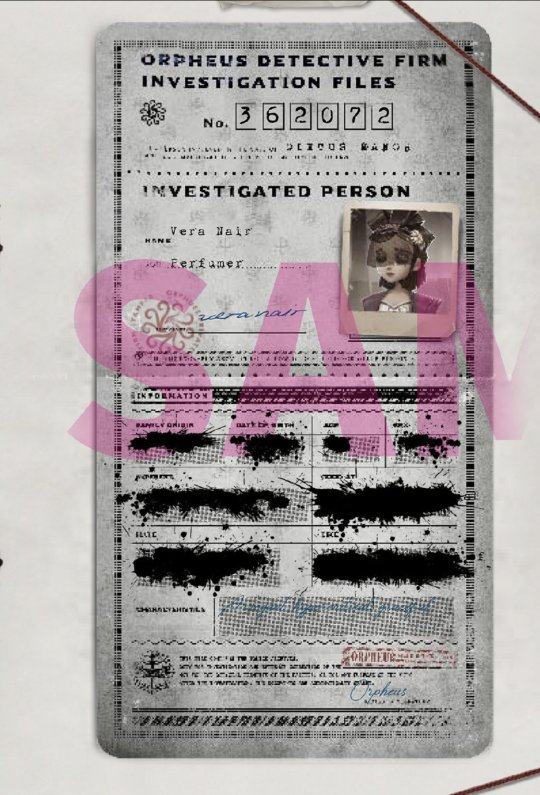
We don’t see any immediate thoughts or feelings from “Vera” regarding her killing her sister, but we do see her guilt and regret when she learns the truth upon reading the real Vera’s diary. How Vera had started the perfume shop and everything that went along with it to ensure Chloe’s talents wouldn’t be “buried” to “prove to those biased people”. We also learn as part of this diary entry that the reason Vera didn’t tell Chloe in advance or why she was doing this because Chloe was “proud” and “wouldn’t want me helping her this way”.

Which implies, if not for Chloe’s pride, Vera may have warned Chloe in advance. Or she could’ve just out right asked Chloe more directly if she (Vera) could help.
I at least partially think Chloe’s pride developed similarly to Edgar’s about painting, which was a combination of self-confidence in their skills as well as I think a semi defensive mechanism to help deal with the unhappiness around them (for Chloe this being the way she was looked down on by everyone in town and by her own family besides Vera) as well as try to prevent themselves from being hurt. Unfortunately, by closing yourself off, it also means distancing yourself from those who genuinely care about you, and for Chloe that was Vera. Maybe Chloe and Vera were a bit more distant when they’d grown up, compared to when they were younger. This potentially could’ve contributed to the build up of emotions in Chloe, with the day she made the assumption that her own sister, her last lifeline, had betrayed her, being the metaphorical straw that broke the camels back.
But as deduction 9 says “Not all mistakes can be corrected”. Chloe had made her “choice” by killing “the only person in the world who truly loved her”. Even worse for Chloe is the fact she had gotten used to living as “Vera”, which had given her the chance to finally achieve her desires and receive the compliments and praise from others she had felt she deserved for so long.

As we see in her 3rd letter, she is described as trying to “escape reality”. This same letter seems to confirm what was likely parts of Chloe’s real personality, as it describes her as “alert and oversensitive” and “mentally fragile”, with the 3rd note, being she “has a conscience” fitting with Chloe’s feelings over killing her sister after she learned the truth. The manor owner states Chloe suffers “something close to a mental breakdown”, which is likely why she wants to forget, but also I think is a term that would fit with how I think Chloe was before. I think Chloe was already close to snapping before she saw her sister start the new perfumery, while her sister’s actions were just the thing to tip her over the edge.

Vera knows she can’t bring her sister back to life, but she also is unable to deal with the complicated tangle of feelings she now has, which are a mixture of sheer guilt, pain, regret, sadness, and devastation. This all combined with Vera’s happiness at living as “Vera” complicating this mess further. As a result, she seeks to forget what happened. Specifically, she wants to forget that she killed her twin, the real Vera. She gets her chance when she receives a “mysterious perfume recipe from an eccentric black marketer”. Using this recipe, she is able to create “Euphoria”, which is described as “anyone who smells this kind of fragrance will be immersed in it and forget everything. But the second note of the perfume is so short-lived that no matter how much she improves it, it cannot be retained”. So, in her desire to perfect the recipe and make it longer lasting, she heads to the manor, which was wear the recipe had come from.

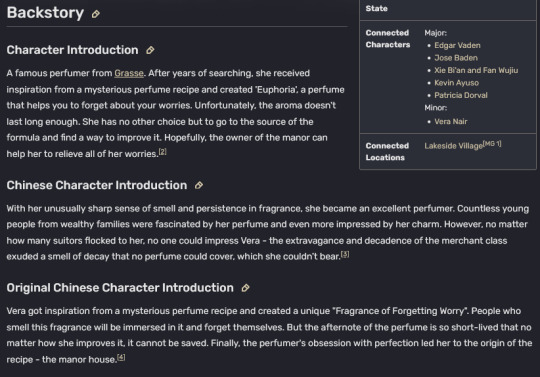
#idv#identity v#vera nair#chloe nair#perfumer#idv vera#identity v vera#idv perfumer#identity v perfumer#sirenjose analyses and theories
29 notes
·
View notes
Text
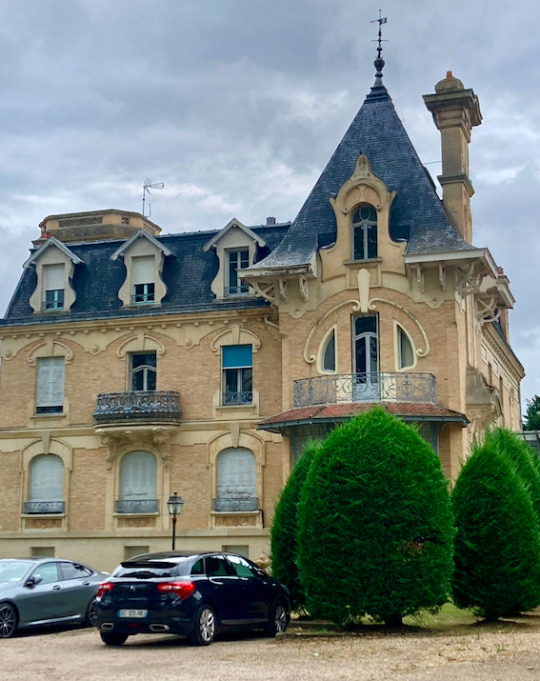
"Maison Pierrotet" ou "Villa Javal" ou encore villa "Les Thuyas" selon les appellations est une demeure Art Nouveau construite par l'architecte Jules Viatte (1901) pour le parfumeur Alfred Javal - propriétaire des parfums Houbigant - à Fontainebleau, juillet 2023.
1 note
·
View note
Text
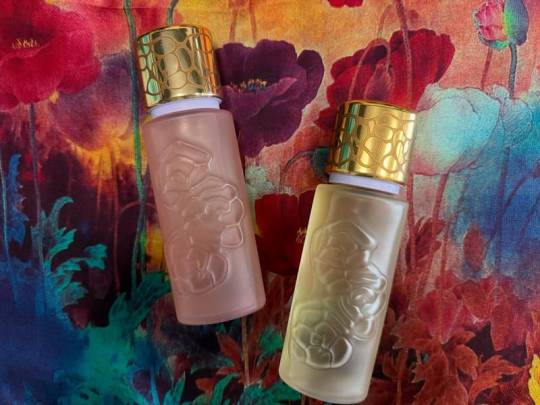
Παγκόσμια μέρα της γυναίκας σήμερα και όλοι ευχόμαστε ‘’Χρόνια Πολλά’’ στις γυναίκες όλου του κόσμου 📷
Happy Women’s Day
Με 2 υπέροχα θυληκά αρώματα από την Houbigant:
•Quelques Fleurs L’Original
•Quelques Fleurs Royale
#παγκοσμιαημεραγυναικας #rosinaperfumery
2 notes
·
View notes


